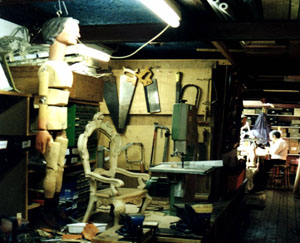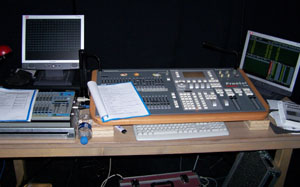OUR WORKSHOP
The classical marionette theatre
To understand the origins of the European classical marionette theatre, we have to go back to the classical antiquity and the Greek tragedy / comedy.
Through the ages, artists were searching for a universal form of theatre, in which several art forms come together in an ideal way. For many artists, Greek tragedy formed an inspiration in which acting, retorics, music and dance came together and enhanced each other.
Around 1600, the composer Claudio Monteverdi felt intrigued by this idea of combining music and theatre. A new theatre genre was born: the opera.

Marionette opera's

New developments
In the 19th century the marionette theatre flourished, especially in Central Europa and Italy. At the end of the 19th century the theatre Carlo Colla e Figli was founded in Milano, and at the beginning of the 20th century the Salzburger Marionettentheater. Both famous marionette theatres are still run by the same families and still perform all over the world. In the Mozart Year (2006) Colla e Figli, the Salzburger Marionettentheater and the Amsterdams Marionetten Theater all presented a Mozart opera at the Festival ‘Mozart delle Marionette’ in Milano.
An important pioneer in the field of puppetry was Richard Teschner (Vienna, 1920). Up till then, puppets were often seen as miniature actors, but Teschner emphasized the specific, unique characteristics of puppetry. The puppet created a fantasy world which related to the dreams and emotion of the audience. Teschner saw puppets as methaphors. Dreams and illusions are often more powerful than reality.
At about the same time, Paul Brann also renewed the puppet theatre with his Münchner Künstler. He thougth of puppetry as a Gesamtkunstwerk, in which art, music and movement formed a unique whole.

Amsterdam Marionette Theatre

Repertoire

An authentic sound

